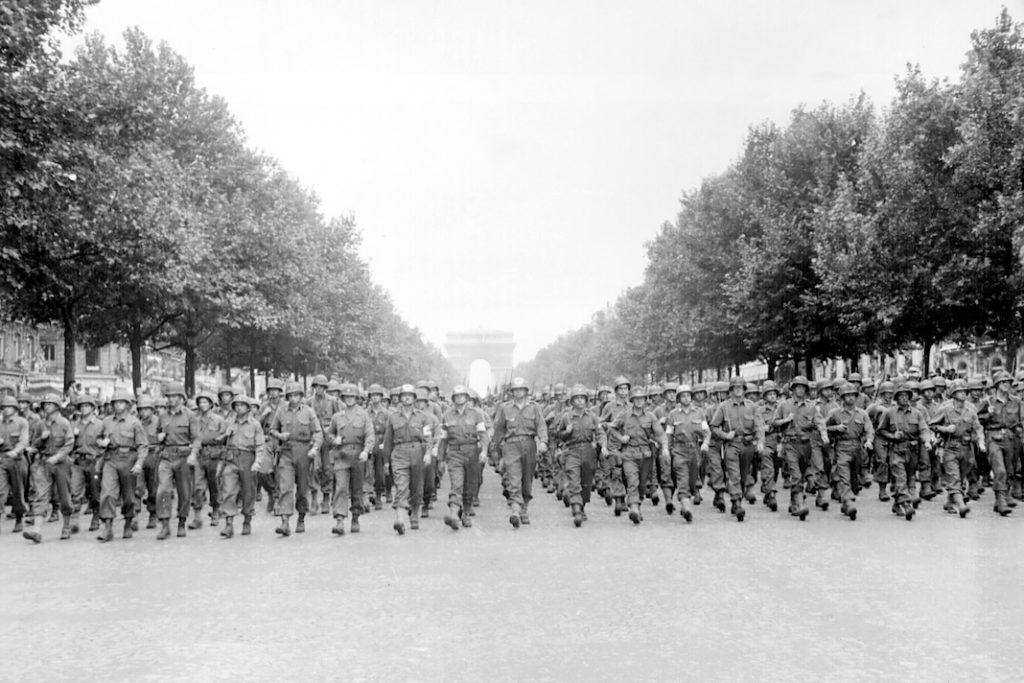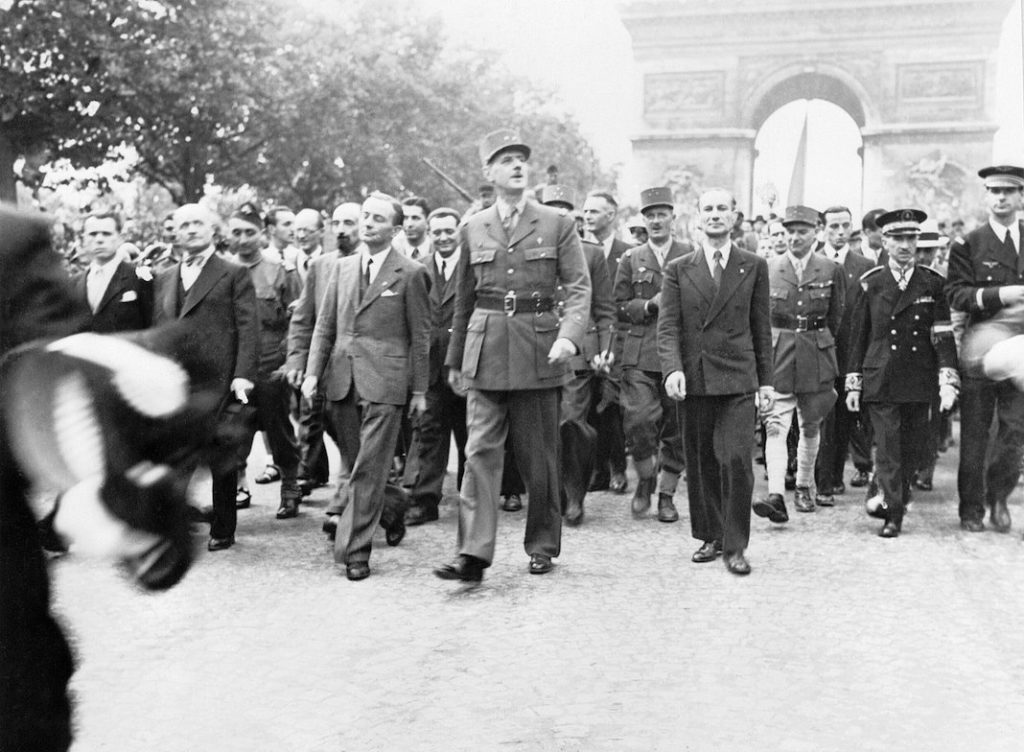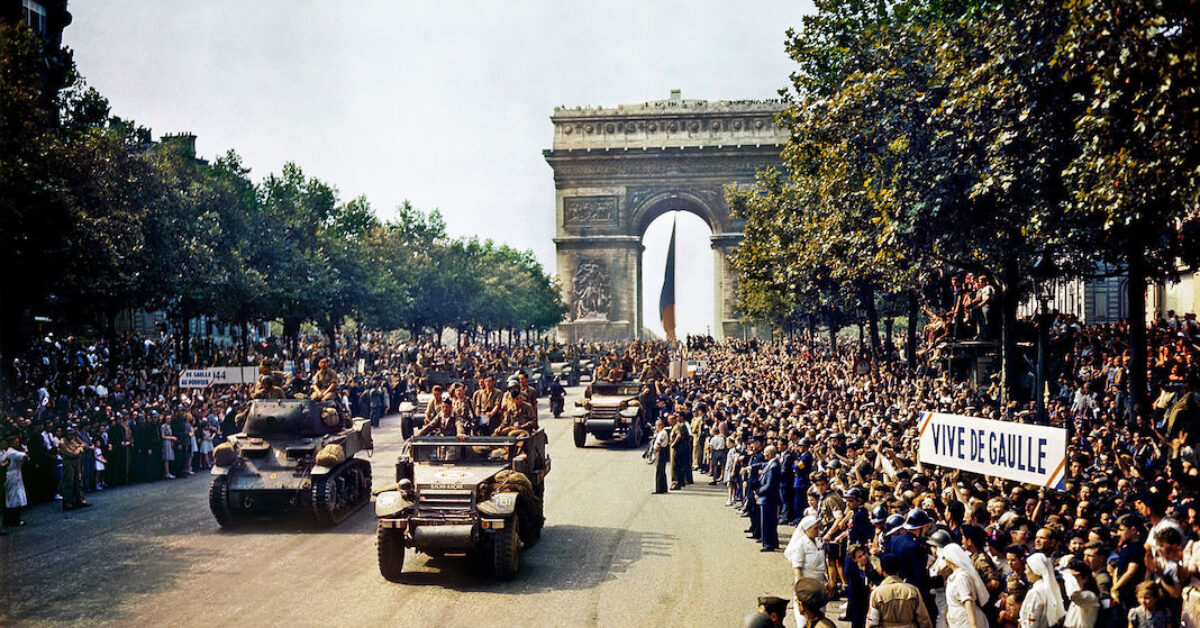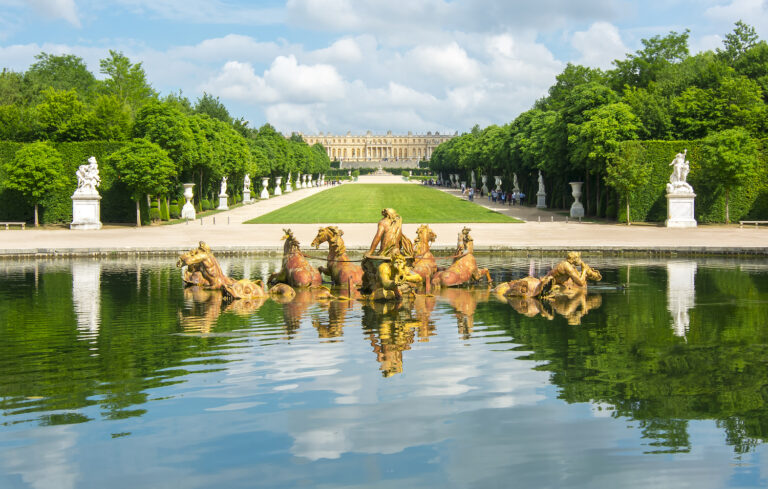1. 16 days of revolt
On August 10, 1944, the resistance called the Parisians to an uprising, the strike extended to trains, the Métro, the post office and even the police. Paris changed hands, the prefecture was invaded on August 19, as were several town halls. The Germans counter-attacked, localized fighting increased despite a truce accepted by the enemy. The French fought at strategic points such as police stations, the École militaire (Military Academy), the Senate, the rue de Rivoli, the telephone connection hub, and the train stations. After six days, the Germans lowered their weapons.
2. 600 barricades
On August 21, Parisians erected makeshift barricades with trees, the grates around sidewalk trees, cobblestones and sandbags to slow down the enemy’s movement or to hold crossroads. “To each his own Kraut!” headlines the daily newspaper L’Humanité with a reference to the German delicacy sauerkraut. Paris thus revives the tradition of barricades, as in 1830 and 1848. Even women and children participated in the movement.
3. 20,000 Germans
The Reich’s troops relied on about twenty tanks, enough to defeat the Parisian insurrection, which did not have any anti-tank weapons. Hence the concern of de Gaulle, who did everything to convince the Americans, in a hurry to bypass Paris and reach the eastern borders, to provide the artillery. The general predicted the possibility of a bloodbath and food shortage in the city. Eisenhower diverted Normandy forces to Paris on August 22.
4. 2,500 square meters
These are the dimensions of the headquarters of the communist Rol-Tanguy, under the Place Denfert-Rochereau. The Parisian leader of the French Internal Forces (FFI), who was coordinating the uprising, went to this secret base in the midst of an insurrection to set up his command post. It was a water services shelter, connected to the sewers, with large underground passages, an independent telephone network and several secret access points in Paris, one of which is by catacombs.
5. 60,000 Allied combatants

The Resistance alone was 30,000 people strong. Add on the 15,000 people of the 2nd DB, the Leclerc division (including 3,500 Maghreb soldiers), and its 400 tanks which entered the main Parisian roads on the morning of August 25, after having seriously fought with the Germans southwest of the capital. And don’t forget to add on the 15,000 Americans from the 4th Infantry Division who supported the French.
6. 53 years old
The age of de Gaulle, who had come a long way. Sentenced to death by Pétain four years earlier, he was now a force of strength in the company. He had three objectives: to restore the state — “Vichy remains null and void,” he said —, to thwart at all costs the influence of the communists who were very present in the resistance, and to avoid American interference in the French administration. At the end of August, Eisenhower marched his troops in front of the man who became recognized as the leader of free France.
7. August 25, the surrender
The Germans were overwhelmed, their troops isolated. General Dietrich von Choltitz only controlled the Place de la Concorde. The military governor (general officer) surrendered to the French, who invaded his headquarters at the Hôtel Meurice, and signed the papers. Did he really have the prestigious monuments of Paris attacked, on Hitler’s orders? The latest research shows that damage inflicted to the monuments was more so the strategic location where the monuments happened to be, such as bridges, the Invalides, the Charenton fort… The military governor’s hesitations, or perhaps the idea of having to defend himself in front of a war tribunal, is what kept the monuments from being destroyed.
8. 2 million
It was the crowd of Parisians who came in droves to cheer de Gaulle as he walked down the Champs-Élysées on August 26, 1944. “It’s a sea!” exclaimed the general. All of them saw de Gaulle, the man of the Appel du 18 Juin which back in 1940 first called the French to resist, for the first time. Arriving only the day before in Paris, he had gone to the Hôtel de Ville, where he had declared his famous speech: “Paris outragé, Paris brisé, Paris martyrisé, mais Paris libéré!” (“Paris outraged, Paris broken, Paris martyred, but Paris liberated!”)

9. 12,500 prisoners
More than half of the German soldiers were arrested and 3,000 of them died on the pavement. As for the resistance fighters, there are 1,000 shot (including 177 police officers) and 1,500 wounded. The 2nd DB had 156 soldiers killed among its ranks. Civilians were not spared: nearly 600 died in the battle, 2,000 wounded and Parisian hospitals were filled all throughout the fighting.
10. 150 bombers
In an avenging raid, the Luftwaffe bombed Paris on the evening of August 26. Several arrondissements were affected, as well as Saint-Denis, Saint-Ouen, Ivry and Vitry. Two-hundred people were killed and 900 were injured.
This article was first published on Le Point.






